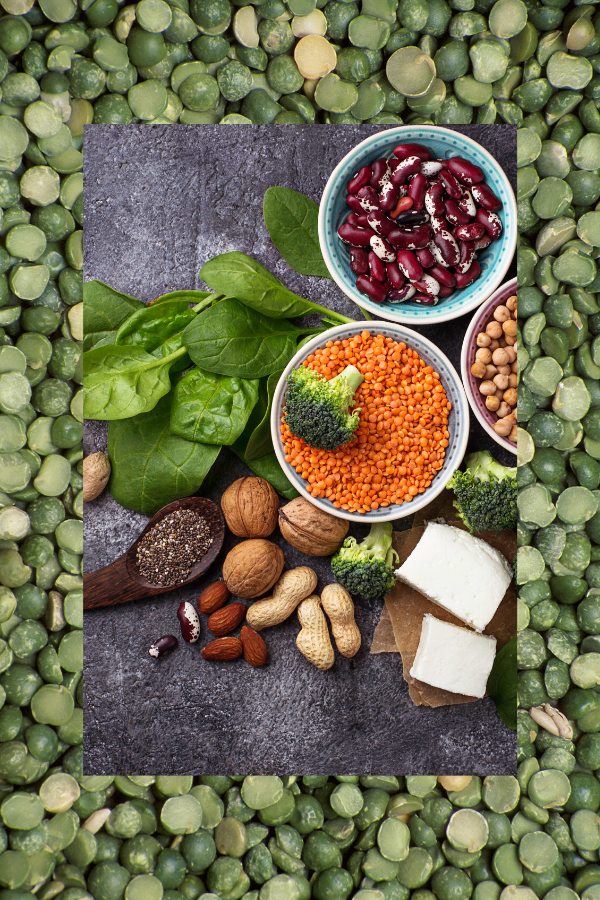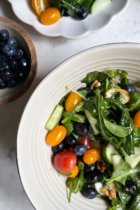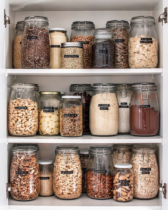
The world is quite obsessed with protein.
One of the most common questions that a vegan or vegetarian gets asked, is undoubtedly, “How do you get enough protein?” Often, I’ve heard vegetarians remark how they’re contemplating adding meat to their diet because they feel they don’t get enough protein, or using protein powders to meet what they feel should be their daily requirement. While supplementing with protein powders is great for athletes and those who are weight-training, it’s not required for everyone. Any kind of supplement always should be accompanied by a balanced diet that contains natural sources of protein — whether plant or animal based.
While it’s common to associate protein with lean meat or fish, there are tons of protein rich plant-based superfoods that can easily help you fulfil any protein requirement. So whether you eat entirely vegan or vegetarian or not, and are looking to add more diversity to your meals, read on for our list on some of the top sources of vegetarian protein-rich foods.
1. Lentils
For vegetarians living in India, this is quite the obvious choice. We’ve all grown up eating lentils in the
form of dal or sambhar, but that can get boring after a while. Some other ways you can eat lentils are:
- Experiment with different varieties of lentils — they all have different flavours and textures and incredible amounts of protein
- Add boiled lentils to grain bowls with quinoa, or in salads
- Make a lentil soup
- You can even make burger patties with them and/or add them to taco fillings
Once you start cooking, you’ll realise how versatile lentils really are.
2. Quinoa
Quinoa is truly a superfood for vegetarians and vegans. It’s a gluten-free grain that is also really rich in protein — 1/2 cup of cooked quinoa has roughly 7-9g of protein.
- Have quinoa instead of rice with curries
- Make a salad
- You can even use it as a cereal with hot or cold milk (add some fruits and nuts!)
3. Seeds
Chia seeds and flax seeds are most popular when it comes to protein-rich seeds. Others that are great too are pumpkin seeds, sunflower seeds, hemp seeds, sesame seeds.
- Sprinkle them on yogurt, with some fruit and granola
- Blend into smoothies
- Add it to hummus, dips, dressings, and salads
- Grind and use as an alternative “flour” in gluten-free desserts
- Add them to your oats or cereal for a crunch
- Make a chia pudding
- Use them in desserts and other baked goods
- Make nutrient dense snacks like energy balls or raw bars
4. Nuts
Almonds, walnuts, cashews, peanuts and pistachios are all great sources of protein. They make a wonderful, filling snack too! Make it a point to add a small fistful of nuts to your everyday diet – raw and unsalted, of course. Other ways to consume are:
- Blend into nut butters (eat it on toast or with fruit) and smoothies
- Add them to salads for a crunch
- Use it in granola, muesli or other cereals
- Mix different nuts and seeds together for a dukkah to sprinkle on everything
- Make desserts, raw bars, energy balls and other snacks
- Grind and use as a gluten free flour
- Make non-dairy milk
5. Beans
Similar to lentils, there are so many varieties of beans that are protein rich. They are starchy and filling, and often can substitute for carbs if you’re trying to eat low-carb. Other than our usual Indian preparations with beans, you can use them in a variety of other ways:
- Make hummus! You can spread it on toast, in wraps, scoop up with pita, veggies, or crackers.
- Cook with spices and combine with rice or quinoa for a full meal
- Roast them to make them crunchy, and then use in grain bowls or salads as a topping
6. Soy
Soy products like tofu, tempeh, edamame and even soy milk are one of the few plant-based complete proteins, meaning they contain all essential amino acids. All of these soy containing foods are really different to taste (some having more of an acquired flavour), so pick what you like best.
- Use tofu in stir-fry dishes with veggies, or in curries; add it to salads, wraps, sandwiches, or soups
- Blend tofu in desserts (like mousse or cheesecake) for vegan variants
- Tempeh is a fermented soy product that is also good for the gut. Add it to grain bowls, salads, sandwiches or stir fry dishes
- Edamame can be added to fried rice, stir fry, salads, sandwiches, grain bowls
- Soy milk is great for your coffee or breakfast cereal, an alternative milk for non-dairy eaters
7. Buckwheat
Buckwheat is what our ancestors would eat, in the form of rotis. If that doesn’t sound very appealing to you, here’s how else you can use buckwheat:
- Soba noodles (made from buckwheat) can be cooked with veggies or in salads
- Crêpes, either sweet or savoury – even pancakes and waffles
- Buckwheat pasta is a great alternative for regular pasta
- Add sprouted buckwheat to salads and sandwiches
8. Sprouts
Sprouts are essentially germinating vegetable seeds, legumes, or grains and known for their wholesome nutritional value.
- Easiest way to eat sprouts is to toss them raw in a quick salad
- Add it to sandwiches and wraps for texture and crunch
- Lightly cook them with your favourite spices
- Eat them with soups and stews as a crunchy topping
- Bean sprouts can be added to curries and stir fry dishes
9. Vegetables
Mushrooms, spinach, kale, Brussels sprouts, and green peas are all excellent sources of protein.
A few surprising ones that also make the list? Avocado, corn, and potato. Yes potato! (Take that, meat eaters).
10. Fruits
In fresh fruit, banana is a good protein source. Raisins, dried apricots, dates, and prunes are good dried fruit protein sources. How to use dried fruit?
- Add them to granola or cereal
- Toss into salads for sweet bits
- Make raw desserts and energy balls
- Combine with nuts to make an energy boosting trail mix
BONUS: Greek Yogurt
For those of you who consume dairy, greek yogurt is excellent for protein. It’s thicker and creamier than regular yogurt, and a serving of plain, unflavoured greek yogurt can contain upto 9-10g of protein!
- Eat it plain with fresh fruit and honey
- Goes great with granola
- Blend into smoothies
- Use it to dip veggies into
- Make into spreads for sandwiches and wraps
- Substitute it for sour cream in tacos, fajitas, and burrito bowls
- Marinate veggies in yogurt with spices and grill
And there you have it! A complete guide on sources of plant-based protein, and numerous ideas on how to incorporate it into your daily diet. With so many innovative ways to eat more protein, you can now go meatless without missing out on your macro requirements!







While peanut butter is a great source of healthy fat, peanut butter powder gives you more protein per calorie so it’s a great way to boost the plant protein content of meals. Like bread, most people think only of carbohydrates when they think of oats. But whole rolled oats pack about 11 grams of protein per cup.